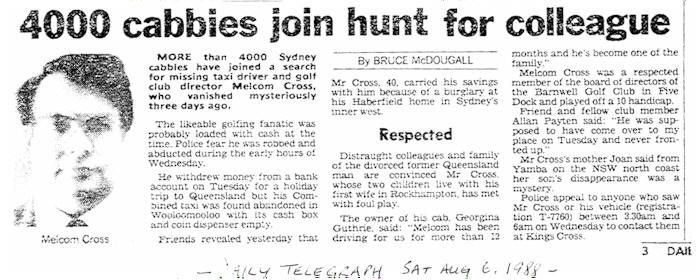The coroner ordered the Department of Family and Community Services provide a statement including the history of its dealings with William's parents, his removal from their care and his placement in out-of-home care.'
Article 1- The Sydney inquest will begin before Deputy State Coroner Harriet Grahame in March and run for a week before resuming in August.
"The police investigation into his disappearance is ongoing and police are following active leads at present," Mr Craddock said.
He said William was in foster care and that, combined with the circumstances of his disappearance, meant there was jurisdiction to hold an inquest.
The coroner ordered the Department of Family and Community Services provide a statement including the history of its dealings with William's parents, his removal from their care and his placement in out-of-home care.
William's foster carers, who attended the hearing, made no comment as they left the court.
Earlier this year, a targeted search of bushland near William's grandmother's home in Kendall found no signs of him but detectives did get information relevant to the investigation.
The search in June and July was designed to rule out William dying in a case of misadventure. (1)
Article 2- Karlie Tyrrell also said the foster parents looking after her son when he went missing at the age of three had "failed" him and should feel guilty. William Tyrrell vanished as he played in his foster grandmother's front yard on the NSW Mid North Coast the morning of September 12, 2014.
-"She went inside and made a cup of tea. If that's the case, like, OK, that's an accident, and that's unfortunate, but it doesn't make any sense to me. Kids don't just go missing."
William's foster mother still cares for Williams older sister. (2)
-"She went inside and made a cup of tea. If that's the case, like, OK, that's an accident, and that's unfortunate, but it doesn't make any sense to me. Kids don't just go missing."
William's foster mother still cares for Williams older sister. (2)
Article 3- Inside the mind of William Tyrrell's abductor. Canberra Times 2015.
Because only his foster family knew in advance of toddler's visit to Kendall, police believe his kidnapper was in the area beforehand.
They were either visiting, residing or working in the small NSW town of Kendall that day.
William vanished from a dead-end street on the edge of a small town. No one but his foster parents and foster grandmother knew in advance of his visit to Kendall.
This has made police confident that the person who kidnapped him was already in the area.
"You would have to have some other reason to be there and take that opportunity; either visiting, residing or working in the vicinity."
There was only a narrow window of opportunity to take William, who was snatched in broad daylight and with a significant risk of being seen by someone on the balcony of William's foster grandmother's home as well as neighbouring properties.
This has made police certain that the kidnapper was impulsive and took tremendous risks. (3)
This was a planned MURDER WHERE THE BONES REMAIN WILL EXPOSE SO MUCH MORE AT 6/34-36A dARLINGHURST ROAD, KINGS CROSS


